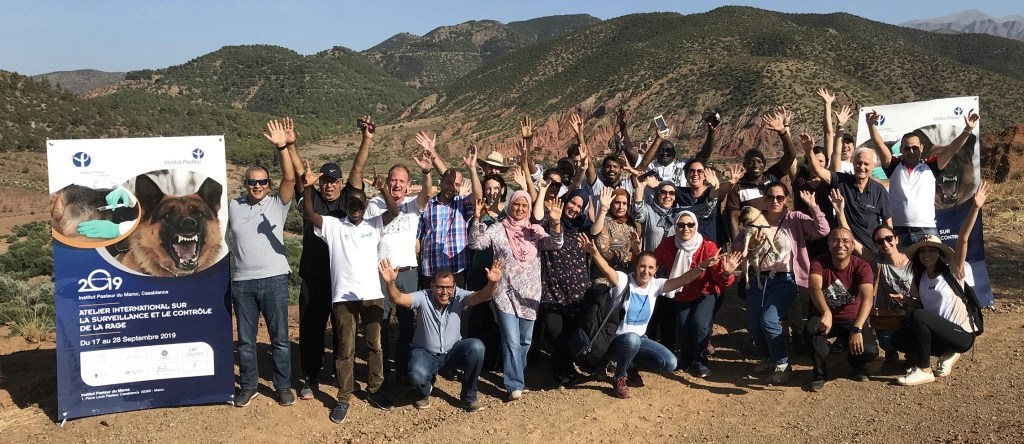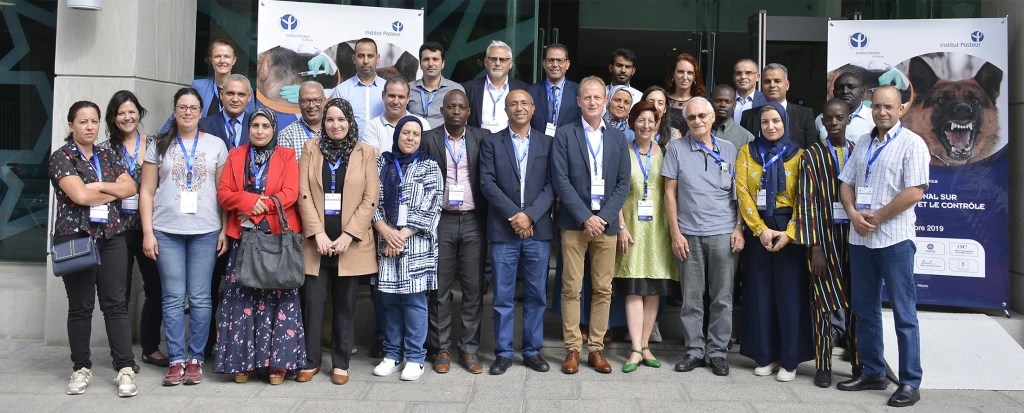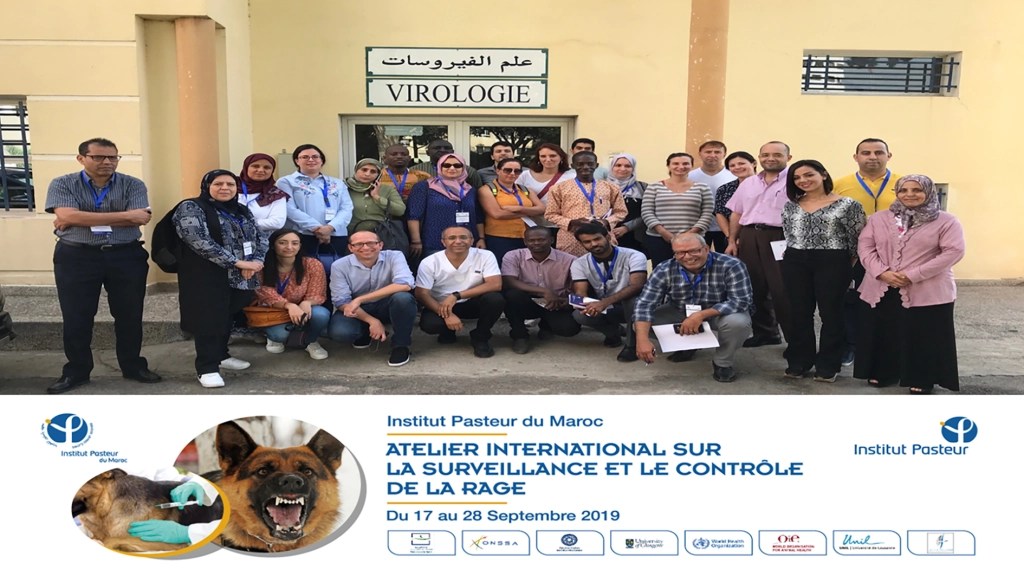Home \ Knowledge Hub \ Focus on \ Focus On… Building of a Network of Rabies “Champions”


10 May 2020
Focus On… Building of a Network of Rabies “Champions”
SHARE

PERRINE PARIZE
Institut Pasteur, Morocco
Rabies is fatal but preventable
Rabies is a lethal encephalitis due to a lyssavirus mainly transmitted to humans by the bite or scratches of terrestrial carnivores (principally domestic dogs). The onset of clinical symptoms of rabies and death can be 100% prevented by adequate post-exposure prophylaxis (PEP) including vaccines. However, the disease is still responsible for approximately 60,000 human deaths per year mostly in Asia and Africa and affects especially underserved people including children.
Raising awareness, cooperation and mass dog vaccination are key to eliminating rabies
This burden is the consequence of a lack of awareness about rabies at national level and a lack of cooperation between human health and animal health sectors. However, eliminating human rabies transmitted by dogs is an achievable goal as recently demonstrated by Mexico, the first country in the world to obtain WHO validation for eliminating the disease as a public health problem on November 11th 2019. In Latin America and the Caribbean, new cases of rabies were reduced by more than 95% in humans and 98% in dogs since 1983. This achievement, in Mexico, is the result of a national strategy for the control and elimination of rabies including free, mass vaccination campaigns for dogs, public awareness-raising campaigns and availability of post-exposure prophylaxis in the country’s public health services.
Rabies elimination is achievable: In 2019 Mexico became the first country in the world to obtain WHO validation for eliminating the disease as a public health problem. This was made possible through a national strategy for the control and elimination of rabies including free, mass vaccination campaigns for dogs, public awareness-raising campaigns and availability of post-exposure prophylaxis in the country’s public health services.
All rabies experts and relevant international organizations have recognized the urgent need to provide training on rabies control and diagnosis methods to medical and veterinary staff. Theoretical knowledge and technical skills needed to achieved the WHO global goal of zero human dog-mediated rabies deaths by 2030 can be transferred to low and middle-income countries by innovative and appropriate training programs. Lessons from the past showed retrospectively that conventional training sessions had little impact on the rabies epidemiological situation and massive online open courses (MOOCs) is not well suited to specific practical training needs. Customized On-Line Training Course (COLT) appears as an appropriate training approach in the context of neglected zoonotic disease and rabies in particular. COLT focuses on small sets of trainees and is designed for situations where acquisition of skills and direct training by experts are needed.
Training workshops improve the knowledge of health professionals for rabies control
Therefore, to improve the knowledge of health professionals in rabies enzootic countries, a training program on Surveillance and Control of Rabies was initiated in 2013 by the Institut Pasteur in Collaboration with the World Health Organization (WHO), the World Organization for Animal Health (OIE), the University of Lausanne, Switzerland, the HSeT foundation, Switzerland, and the International network of Institut Pasteur, with the active participation of the Food and Agriculture Organization of the United Nations (FAO), the Global Alliance for Rabies Control (GARC) and more recently the collaboration of the University of Glasgow, Scotland. Since 2013, 5 workshops were organized; in Dakar, Senegal in 2013, in Phnom Penh, Cambodia in 2015, in Yaoundé, Cameroon in 2016, in Amol, Iran in 2017 and lastly in Casablanca, Morocco in September 2019. Participants to the workshops were very motivated physicians, veterinarians, and specialists in infectious diseases, virology and/or epidemiology already involved locally, nationally or regionally in the control of rabies.
Over 100 people from 40 countries across the world have been trained in rabies control through courses organised in conjunction with Pasteur Institute. The 2019 course trained 19 animal and human health professionals from across North Africa, Sahel and West Africa, the aim of which is to enhance countries capabilities to control rabies.
The purpose of the last course in Morocco was to provide a practical training on rabies with a special focus on North Africa, Sahel and West Africa for 19 professionals of animal and human public health sectors. The course emphasized the need for a multidisciplinary approach and intersectorial cooperation: “one health approach”. A pre-training e-learning assessment tool was provided to pre-selected trainees to prepare them and help them achieve a sufficient and homogeneous level of knowledge. This pre-training session required approximately 30 hours of lecture and 70 hours of individual work and was followed by a final evaluation performed online by each applicant. Then, the onsite course (11 days) focused on lectures and practical sessions, as bench work, demonstrations and hands-on sessions. The motivation all along the training, the satisfactory scores obtained by the students, as well as the evaluation of the course by the trainees clearly indicated that the workshop met its objectives.
This course, as well as the former sessions, were unique opportunities for mixing experience and knowledge between international experts on rabies and a very motivated group of participants involved in the control of rabies in enzootic countries. Since 2013, 108 trainees from 40 countries of Africa, Asia and Middle East have been trained during this program leading to the building of a network of rabies “champions”. Efforts should be pursued, to help alumni to apply and transmit knowledge and skills at regional and national level, and to train professionals from areas untargeted in the previous sessions. From acorns grow oak trees.




PERRINE PARIZE
Institut Pasteur, Morocco
The views expressed in this article are those of the author(s) and do not necessarily represent those of
MSD Animal Health.

